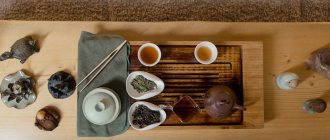Modern manufacturers offer a wide selection of mattresses that vary in hardness, size, and height. Recently, thin mattresses - futons - have become popular, which can be used to adjust the hardness of sofas and beds in case of unexpected guests. It can be used to create an unusual room style
Futon - what is it?
Thin mattresses - futons were originally common in Japan. Traditional bedding for this country does not take up space in the interior. A thin cotton quilted mattress is laid out on the floor for nighttime rest. In the morning it is rolled up and stored in the closet. Initially, futons were made by hand. Their main feature was the ability to fold compactly and not take up much space in storage systems.
In modern European homes, the futon has become a frequent guest, but due to its practicality and compactness when rolled up, it is used only for temporary use.
Advantages
The product has a number of positive qualities. That is why it is popular in many countries.
Advantages of a futon...
- Environmentally friendly product. They began to use it in Europe with the acquired fashion for a healthy lifestyle. The mattress itself is made from natural materials.
- It has a good effect on the condition of the spine. Thanks to its composition and structure, the product follows a person’s position during sleep. This will be especially useful for those who have back problems.
- Space saving. During the day, the futon is folded into a special cover and put away in the closet. This allows you to leave space in the room free.
The device meets the standards and does not cause allergic reactions. With its help, the interior will be original.
Futon and its function in a modern home
Futon is still an indispensable part for implementing design solutions in the Japanese style. It can be used as an element of original design for a room in a minimalist style, in which it can be
- sofa,
- bed,
- chair,
- topper,
- Japanese mattress.
Made in a modern version, it will fit perfectly into the interior, in which there is nothing superfluous, everything is in its place. Here he will provide a comfortable existence, aimed at contemplating more beautiful and interesting things.
Japanese mattress
Futons in their original form are rarely used in homes outside of Japan. It is chosen as the main place to sleep only when decorating a bedroom in a national style, where there is no place for a traditional bed.
Proponents of this design decision justify their choice
- benefits for the spine;
- ease of operation;
- ability to withstand any load without restrictions;
- the opportunity to free up maximum space during the daytime.
Some fans of Japanese culture use traditional Japanese futons in children's rooms, noting their safety.
In order to save space, bunk beds are often installed in children's rooms, which is dangerous for young children. Futons are completely safe in this regard. The only negative is that it often leaks across the floor, but installing a heated floor system can solve this problem.
Bed
A futon can also be used for a regular bed. It will perfectly replace an orthopedic mattress for people who value comfort and choose softer sleeping surfaces.
The Japanese mattress looks chic on a low bed made of natural wood, which will be an excellent addition to an interior in a minimalist style.
Sofa futon
A new modern transformation of a futon is to use a mattress on a sofa. Models are available in two versions:
- folding,
- non-folding.
In both versions, the sofa is made of natural wood. The folding version is equipped with a practical mechanism, which allows you to quickly and effortlessly turn it into a regular bed. This type of furniture is ideal for small spaces.
A non-folding futon sofa is an original solution for a living room in a minimalist style. It is a wooden structure with a backrest, similar to a park bench. A Japanese mattress is placed on it. Depending on its size, it can bend in the middle or in thirds. The second option is a comfortable soft place for a relaxing break.
Topper
A traditional topper is a type of mattress topper that is used in conjunction with a regular orthopedic mattress to adjust its firmness. The futon topper, thanks to its original stitching, has massage functions, which promotes complete relaxation of the spine and improves blood circulation in the back muscles.
With a large number of toppers on the market, many buyers prefer futons. Their multi-layer natural filler and durable cotton cover extend their service life. Natural materials do not cause allergies and are absolutely safe for people prone to this disease.
Futon chairs
For those who like to create unusual interiors in a minimalist style, futon chairs will be an original design solution. Presented in two modifications:
- frame,
- frameless.
They can perfectly complement each other or be used separately.
A futon chair has many benefits. In addition to a comfortable chair, you also get a medium-hard mattress on which you can put guests to sleep.
The video demonstrates a frameless futon chair and how to assemble and use the transformable mattress chair:
What other furniture is made from natural futon?
Modern technologies are developing, and the production of bedding also keeps up with them. For greater comfort and variety, we came up with new interesting and comfortable pieces of furniture. For example, a futon chair. It is very convenient, which means that many will like it!
It is also worth highlighting the futon sofa. Such products are basically laid out the same way as regular ones. They have a very simple mechanism. They never creak. At the base there is something like a wooden bench, on top of which lies the mattress itself. Due to the fact that a futon consists of many layers of combed cotton, which are combined with different stitches and covered with a rather rough fabric, such a thing is very useful for the back of any person.
Futon sofas are small-sized and practical, and armchairs are quite functional and also save space well. All products have an unusual design and shape. Your guests will always be pleased to sit on such a Japanese invention made from a seemingly ordinary mattress.
Advantages and disadvantages of Japanese futon
The use of the Japanese mattress and its modern modifications has both fans and opponents. The first talk about the advantages of a futon, the second point out the disadvantages.
pros
- natural filler and cover;
- various methods of application;
- good for back health;
- ease of use and storage;
- practicality;
- long service life;
- a large number of modifications allowing you to create original interiors.
Minuses
- low orthopedic effect;
- short service life;
- it is necessary to create ventilated storage areas (the mattress, especially when it is used on the floor in the traditional version, does not like dampness, so regular drying will extend its service life.);
- increased requirements for cleanliness;
- sleeping on the floor can have unpleasant health consequences (drafts in the cold season).
Modern manufacturers offer futons with synthetic fillers, but they are of very high quality.
Flaws
Disadvantages of futon mattresses:
- Insufficient orthopedic effect. The slatted base, typical of standard accessories, serves to improve the anatomical properties of the sleeping surface. This factor is often mentioned by orthopedists.
- Reduced service life. There is empty space between the slats in a standard mattress. Thanks to it, air circulates freely in the bed and moisture is not retained. A flat futon that lies on the floor is not ventilated and retains moisture.
- The need for regular cleaning of the premises. In a room where a person sleeps on the floor rather than on a bed, the floor covering should be washed every day. You will have to put a removable cover on the mattress. This will protect it from contamination.
- Load on muscles in the morning. This minus is insignificant for athletic young people. In the morning, when the muscles of the torso are in a relaxed state, it is undesirable to rise sharply from the floor. For older people, these actions are completely unacceptable.
- Additional harmful factors. A draft running across the floor, a concrete screed - all this negatively affects human health.
Mattress fillings
The traditional Japanese futon used natural combed cotton fiber as filling. It was evenly distributed inside the cover and quilted in a special way. As a result, the product had a massage effect and was easy to fold for storage.
Modern products use both natural and artificial fillers:
- coconut coir,
- latex,
- orthopedic foam,
- polyurethane foam.
Coconut coir is usually used with softer fillers. Futons do not use solid slabs, as the mattress must be folded for storage.
How to choose a good futon?
The growing popularity of Japanese bedding has led to the appearance of a large number of counterfeits on the market. How to choose a high-quality futon, even if it is not made in Japan?
Today, original mattresses are produced in Europe, and increased demands are placed on them. To avoid making mistakes when purchasing, it is recommended to pay attention to:
- on the materials from which the product is made;
- the dimensions of the room in which the futon will be used;
- modification: traditional or modern;
- purpose of use (main or extra bed);
- height (for constant use, higher models are needed, unless, of course, you prefer to sleep practically on the floor);
- the strength of the cover (which is also important for the main bed).
Taking into account the listed characteristics, you can easily select a futon that will fully meet your requirements and will serve you for a long time.
Emergence
In ancient Japan there was no concept of “bed”, so the Japanese used hard tatami and straw mats for sleeping places. Tatami were used by poor people, and mats were used by rich people. In the 13th century, they came up with a way to replace this bed. The alternative was a bag filled with cotton or wool, but it was expensive and poor people could not afford it. One mattress cost 1.2 million yen.
The futon did not decrease in price until the 17th century, but in the 18th century it became popular and the price dropped due to the import of raw cotton. This is how a tradition even appeared in Japan: a husband’s love could be measured by the amount of bedding. Futons were also used to seduce women. Noble people gave the bed to relatives or friends.
Alternative to a futon mattress
When thinking about buying a futon mattress, consumers often have questions about the feasibility of the purchase. When considering an alternative for Japanese bedding, they talk about traditional floor mattresses or toppers. It is the latter that are often used instead of a futon. Fans of more comfortable sleep use regular orthopedic mattresses placed on the floor or on a slight elevation.
Despite the great similarity in functionality, the futon remains a more comfortable sleeping place, which is determined by the multi-layered fillings.
If objects could give themselves characteristics, a futon would probably describe itself like this: a master of metamorphosis. We counted at least four differences between traditional Japanese bedding and its modern variations.
Purchase for a million
Since the futon still cannot talk, historical facts will briefly tell about its past. So, fact number 1: place of birth - Japan. Fact No. 2: date of birth - 17th century.
Several centuries before the advent of the futon, the rich inhabitants of the Land of the Rising Sun slept on hard woven mats (tatami), and their poor relatives slept on straw mats. In the 17th century, the Japanese still continued to rest on the floor. However, more comfortable sleeping places - futons - began to appear in the homes of wealthy citizens. Expensive materials were placed inside cotton mattresses: wool, cotton. Because of this, the cost of the product could exceed one million yen. It is not surprising that the less affluent population afforded such bedding only in the 19th century, when fillings became cheaper.
Modern folding bed and something else
Nowadays, a Japanese mattress rarely serves as a full-fledged bed. Its main purpose is to be a temporary sleeping place. Before going to bed, the futon is spread on the floor, and in the morning it is rolled into a tight “roll” and put away in a closet or niche. This option is suitable for people who:
- They are just settling into their new apartment;
- They don’t like traditional furniture too much;
- They prefer minimalism;
- They love original things in the interior;
- They often leave friends or relatives overnight.
Like its ancestor, the modern futon is still the same comfortable mattress, but at the same time it:
- No longer a part of only Japanese culture. Appearing in Japan, it eventually gained fame throughout the world.
- It has become a multifunctional interior item. With a slight movement of the hands, a separate sleeping place turns into a pouf, armchair or topper.
- Changed the form and content. The outside of the futon can be jacquard, cotton, the inside - latex, polyurethane foam and others. There are different variations and combinations.
- Decreased in price. Nowadays you don’t need to be a Japanese millionaire – you can spend as little as 5 thousand rubles on a purchase.
Same as topper?
It’s no wonder that bedding items are often considered synonymous. Both products look like anatomical mattresses that provide proper support for the body during relaxation. Actually, that's where the similarities end.
The differences primarily relate to functionality. The topper is not used as an independent sleeping place. It's always just an addition to what you sleep on. It is placed on top of a bed, sofa, cot, chair or mattress to hide dents, unevenness, protruding springs, etc. Thanks to its thickness of 5–7 cm, the product levels the surface and provides the body with an appropriate level of rigidity. There is often only one material inside the topper. For example, polyurethane foam.
A futon, as a rule, is composed of several types of fillers, so its height can be 8, 10, or 16 cm. The multilayer product is intended for autonomous use. On a 15 cm mattress you can sleep comfortably on the floor. However, if necessary, a futon can successfully replace not only a bed, but also a topper. Many models are equipped with corner elastic bands and ties that prevent the mattress from slipping.
How to choose a futon
Since the popularity of futons has spread beyond their historical homeland, bedding manufacturers are also trying to keep up with the times. Today, buying a good quality domestic mattress is not a problem if you know what to look for. There are single, one-and-a-half and double models that can withstand weight up to 90-110 kg (per person). But sizes are an individual concept. In addition to them, futons differ from each other:
- height (thickness);
- type of “filling”;
- quality of the outer layer (cover);
- its color;
- calculated load;
- functionality, etc.
For constant use on the floor, it is better to take a wear-resistant mattress with a dense polycotton or cotton cover and a thickness of at least 15 centimeters. If you want to sleep comfortably on a soft bed, choose a product filled with polyurethane foam. A moderately rigid base is provided by latex, and the most “severe” futons are made from coconut fiber. They will level the surface well if you plan to place the mattress not on the floor, but on a bed or sofa. There are also models in which one side is stiffer than the other. These are universal “soldiers”.
The same can be said about transformable futons. Their inventors skillfully complemented the functionality of traditional products. From a mattress you can make not only a full-fledged bed, but also an ottoman or an armchair . In your free time from sleep, they will become a practical and convenient part of the bedroom or living room.
Rules for a caring owner
Happy owners of an ergonomic item just need to regularly follow a few basic recommendations:
- ventilate the product when disassembled;
- periodically turn from one side to the other;
- avoid getting wet (including washing);
- Remove stains by dry cleaning.
Futons are easy to care for and this is an added benefit. Today, bedding has new facets that expand its scope of application.
How to care for your futon
When a futon appears in your home, you need to understand that this product needs some care, which depends on the chosen option.
- A traditional Japanese mattress must be rolled up and stored in a closed room (closet) for the day to avoid dust settling on its surface.
- It is not recommended to lay the futon on a lattice surface. If a special base is used, it should be solid, ideally wooden.
- Regardless of the type of futon, it is recommended to regularly ventilate it in a dry room.
- The surface of the product is cleaned with a brush.
- In case of more severe contamination, you should contact a dry cleaner.
Important! It is not recommended to use wet products to care for your futon.
If you follow these recommendations, the Japanese mattress will last a long time, regardless of how it is used.
The energy boost you need
Japan is an ancient and mysterious country with unusual traditions and a unique culture. We adopted a lot from there, diversifying our modern life with original objects and things.
The Japanese style interior looks quite beautiful, high quality, harmonious and at the same time simple. Their design is somewhat reminiscent of so-called asceticism. The more free space and less unnecessary furniture, the more air and positive energy will circulate in your home all the time.
According to the Japanese, this is necessary for a happy and peaceful life. This style is dominated by light and non-provocative shades: sand, beige, pastel, cream, pearl and brown. Bright colors are rarely present. The most important thing is unity with nature. And here every detail is important. Furniture, flooring, and the same sofa for the futon - everything should be made of wood.
So, let's summarize. Futon - what is it? Now you can safely say that this is a special mattress that performs its functions well. It suits not only the Japanese style, but also absolutely any interior in the modern world, and has many decors to suit every taste. A futon can help you relax and make your posture much straighter and more beautiful.
Where can I buy?
In order not to be disappointed in your purchase and to enjoy a real Japanese mattress or its modern soft version, it is recommended to make purchases only in specialized stores. It is advisable that this be an official dealer of the manufacturer. In this case, you will purchase a truly high-quality item that will only show its good side.
The Japanese futon is experiencing a rebirth. These are sofas, armchairs, beds that are at the peak of popularity. They are distinguished by convenience, practicality and affordable price. The futon is easy to use and can be easily transformed, which gives room for imagination.
A futon, like any mattress, is a guarantee of good rest, complete restoration of strength and a boost of energy. By buying it in a specialized store, you are purchasing a quality item that will earn only positive reviews.











